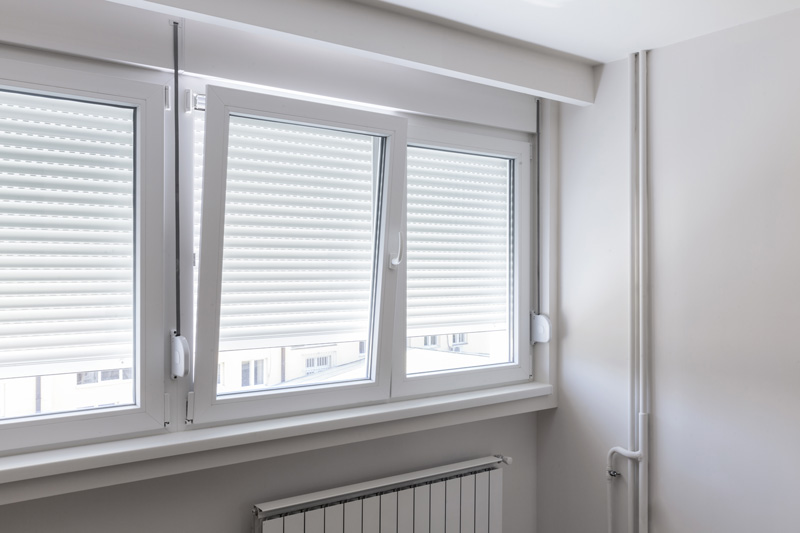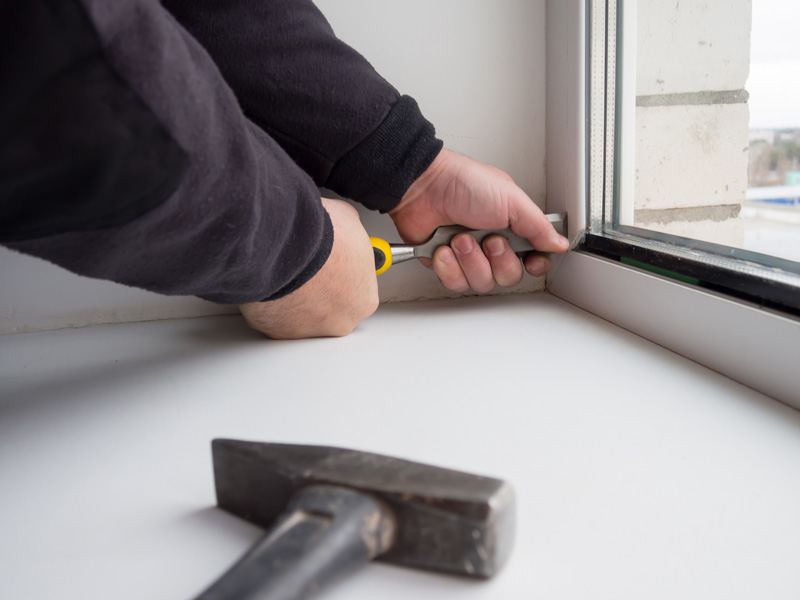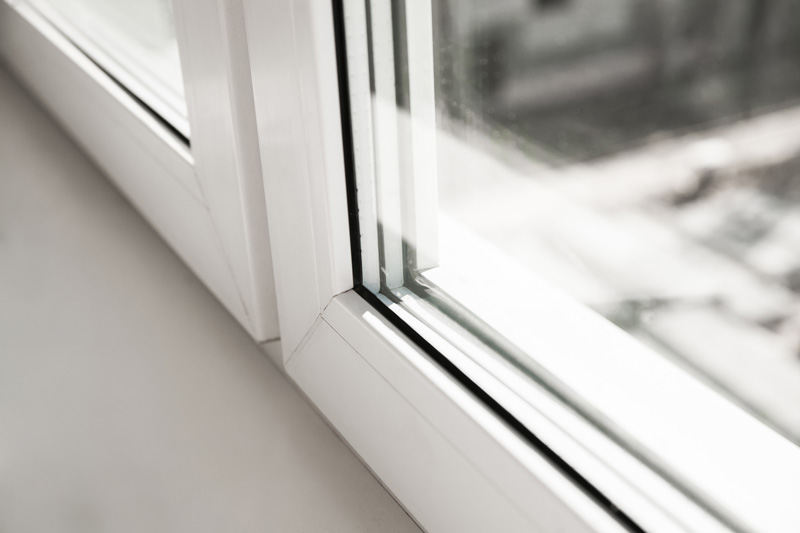Removing old windows takes a number of steps. If you follow the right protocol, removing old windows can be a breeze.
The Dimensions of a Window
The vast majority of wood sash double hung windows in America have the same specifications. Starting from inside the house and working out, you have a wood stop approximately 3/8″ X 3/8″. Then comes the lower sash (the sash is the piece of glass and surrounding wood frame), and another wood stop (called a parting bead) between the lower sash and upper sash. This stop is approx. 1/4″ X 1/2″. There is also the upper sash, and finally, the outside wood stop (called a blind stop) that is approximately 1/2″ X ¾.”

Getting Prepared
Before beginning, be sure to wear safety glasses and gloves. The safety glasses will protect your eyes from debris, and the gloves avoid splinters. The inside stop needs to be removed first. Try not to damage these stops; they will be re-installed after the replacement windows are put in. If you should happen to crack the old stops, you can take a piece to a hardware store or molding store to get replacements. If the stops have been painted to blend into the surrounding trim or wall, you need to put a flat screwdriver or putty knife into the indented area that separates the stop from the surrounding area. Drag the blade from top to bottom to chip away the paint. Then, put a stiff blade putty knife into this seam and pry the stop away from the frame. Start in the middle of the stop where there is the most flexibility. Work the putty knife from the middle to the top, then from the middle to the bottom. The number of nails that were used to install the stop will determine how difficult removal will be. Most of the time there will be stops around all four sides of the opening, but some openings don’t have a top stop, and others have no bottom stop.

The Necessary Steps for Removal
After the inside stops have been removed, you should be able to pull the lower sash out. If the windows were painted shut at some time, you might have to pry the area where the lock is located to separate the sashes. Now, once you get the lower sash out, it will still be attached to the cords that hold the window up when you raise it. Take a pair of tin snips and cut the cords while maintaining tension on them: the cords will recoil back into the assemblies. Then, take the lower sash and set it aside.
Next, remove the middle stop, or parting bead. This piece is going to be thrown away, so you don’t have to be careful when removing it. The parting bead will be on top and along both sides (never on the bottom). Take a screwdriver and tap it into the groove between the side frame and parting bead and pry out. The bead is nailed into a recessed groove. When all of the parting bead is out, the upper sash will come out. If it’s painted to the outside stop, carefully pry the sash from the outside stop with a stiff putty knife. You want to avoid damaging the outside stop. Remove the upper sash the same way you did the lower sash, cutting the cords under tension.

At this point, you should have the inside stops removed and set aside to be installed later. Also, both sashes need to be removed and discarded, as well as the middle stop or parting bead. The outside blind stop should be left in place undisturbed. Check to make sure there are no obstructions in the opening such as nails, or the metal tab at the bottom for holding in the old screen. The final step is to take a stiff putty knife and scrape the inside face of the outside blind stops to get rid of any old caulking. This is the surface that the replacement windows are going to rest against, and you are going to want this area as smooth as possible. Clean up all loose debris from the opening, and you are now ready to install your replacement windows.